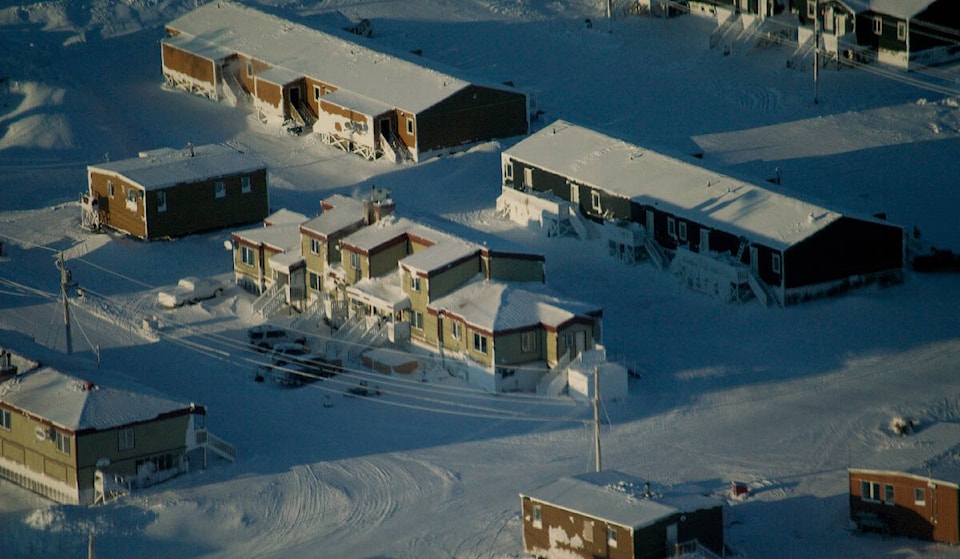The Government of Nunavut has set its direction for the next four years and its Katujjiluta mandate, released Tuesday afternoon, includes the goal of developing at least 1,000 housing units of all types.
Many of the objectives were touched upon when Nunavut commissioner Eva Aariak delivered her throne speech.
Other housing-related aspirations include creating more family violence shelters, youth shelters, and transitional housing; assisting more Nunavummiut in renting or purchasing their own homes and developing “enduring partnerships with Inuit organizations, the private sector and other levels of government to expand the housing continuum.”
“Access to permanent, safe, reliable housing determines our quality of life – it impacts educational outcomes and graduation rates, access to employment, and health and wellbeing outcomes including suicide rates and intimate partner abuse,” said Aariak. “For far too many in our communities stable and affordable housing is out of reach. Nunavummiut continue to grapple with an acute housing crisis compounded by the ongoing Covid-19 pandemic and tuberculosis crisis.”
The Nunavut Housing Corporation announced earlier this month that it expects to build 52 new housing units in 2022-‘23, unless rampant inflation reduces that number. It is estimated that Nunavut needs approximately 3,500 more homes to keep up with existing demand.
Caring for Elders and ensuring they remain in Nunavut is another aspect of the Katujjiluta mandate.
The territorial government will aim to expedite the construction of regional long-term care facilities with capabilities to meet the needs of Nunavummiut with complex care requirements; expand and/or renovate existing continuing care facilities; provide culturally and linguistically relevant training for staff working in continuing care facilities; and accelerate the development of housing units for Elders and seniors.
In the realm of health, the GN is committing to the expansion of education and training programs that provide Nunavummiut with the necessary qualifications for professional and paraprofessional work in healthcare, mental health, and addictions treatment; increased opportunities, training, and formal recognition for Inuit to provide culturally and linguistically relevant mental health and wellbeing programs and services; engaging more Elders and other community members as advisers and local counsellors; promoting and providing long-term core funding for community-led programs and services; and reinvesting in suicide prevention and after-care programs with various partners, with an emphasis on those that address root causes such as child sexual abuse, trauma, bullying, and discrimination.
In the education portfolio, the government promised to accelerate work on a kindergarten to Grade 12 Inuit language curriculum and Nunavut-specific learning resources, but no defined target dates are attached. The 5th Legislative Assembly created controversy when it delayed full Inuktitut bilingual education for students in grades 4 to 9 until 2029 and left the timeline for grades 10 to 12 undefined.
Other education ambitions include beginning a phased rollout of full-day kindergarten programs; improving the efficiency and effectiveness of Financial Assistance for Nunavut Students (FANS) and other direct financial aid for post-secondary learners; and developing and implementing a strategic plan for Inuit language training in the public service.
Plans for diversifying local economies include increasing training for employment in sectors such as mining, arts and crafts, tourism and small business in partnership with Inuit organizations and the private sector; repatriate fisheries licences and purchase more fishing quota; investigating the potential for alternative building technologies to be used and manufactured in Nunavut, with an emphasis on energy-efficient and climate-friendly construction; and create an online marketplace for Nunavut arts and crafts, which some artists may welcome in light of the demise of the Nunavut Arts and Crafts Association.
“The Katujjiluta mandate is unique. It is the first one developed through a historic dialogue between all members of the Legislative Assembly, the leadership of Nunavut Tunngavik Inc. and Nunavut’s three regional Inuit organizations,” Aariak said.
Premier P.J. Akeeagok added, “I am proud of this mandate, not only because of its ambitious scope, but also because it serves as a testament to our commitment to work collaboratively and cooperatively towards a better territory.”
NTI leaders embraced the GN’s mandate.
“For the first time since the creation of Nunavut 23 years ago, NTI was closely involved in developing the Government of Nunavut mandate, including attending the full caucus meeting where the mandate was being discussed,” stated NTI President Aluki Kotierk. “Nunavut was created by Inuit through the Nunavut Agreement, a modern treaty with the Crown, and our involvement in the mandate’s development confirms a new level of transparency and willingness from this government to work with the public majority.”
NTI vice-president James Eetoolook added, “Already, we are seeing a change in tone and willingness to work in partnership towards the vision of Nunavut. Inuit want to participate in decisions about ourselves, the continuation of our way of life and the economic, cultural and social well-being of Inuit.”
